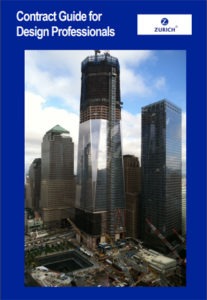Design-Build contractor (Maeda Pacific Corp) engaged a design firm to prepare a cost estimate that it used in preparing a bid to the U.S. Naval Facilities Engineering Command (“Navy”) for a water supply system at the Andersen Air Force Base in Guam. After being awarded the design-build contract, the contractor engaged the design firm to provide design engineering for the project as well as construction quality control management. The design-builder awarded a design-build subcontract to another contractor (“Smithbridge”) to design and construct a water tank for the facility, and that firm in turn awarded a design subcontract to another design firm for structural engineering services for the tank. When the tank was substantially complete, the tank roof collapsed during a test of the water pumping system. A forensic engineer later determined the cause of the collapse to be a gross overload due to the absence of air vents that had not been designed for the tank. Maeda sued the two design firms, alleging breach of contract and negligence, claiming that it “seeks only damages associated with repairing and replacing” physical damage to its work. Both designers moved for summary judgment, arguing that the cost of repairing the damage caused by the collapse are “economic losses” that are not recoverable in a negligence cause of action. Opposing the motion, the design-builder argued that the rule does not apply to parties that lack a contractual relationship, or when there is a contractual relationship but the law imposes a duty independent of the contract. After doing a nice explanation of the history and purpose of the economic loss doctrine, the Supreme Court of Guam in the case of Maeda Pacific Corp. v. GMP Hawaii, Inc., 2011 WL 5825988 (Guam 2011), held that “in the context of commercial construction litigation, where a party in privity of contract with a design firm is seeking to recover economic damages, and no personal injury or damage to property other than the subject of the contract is alleged, such a party is limited to contractual remedies, and a negligence action may not be maintained.” In addition, the court held that the doctrine also barred an action against the designer with whom the design-builder was not in privity of contract.
The court explained its holding as follows:
We hold that the economic loss doctrine does indeed apply in Guam. We further hold that in the context of commercial construction litigation, where a party in privity of contract with a design professional is seeking to recover for economic loss damages, and no personal injury or damage to property other than the subject of the contract is alleged, such a party is limited to contractual remedies, and a negligence action may not be maintained. We reject the argument that a different standard of care should be applied to design professionals beyond what is applied to other parties. Finally, we hold that where a party reasonably could have, by contracts with the defendant or through an intermediary, protected itself from the loss, a lack of privity will not render the economic loss doctrine inapplicable.
Comment: The court does an excellent job of describing the economic loss doctrine and then explaining why it should appropriately be applied to claims against design firms for purely economic losses regardless of whether the claim is by someone in contract with the designer of someone with no contractual relationship.
About the author: Article written by J. Kent Holland, Jr., a construction lawyer located in Tysons Corner, Virginia, with a national practice (formerly with Wickwire Gavin, P.C. and now with Construction Risk Counsel, PLLC) representing design professionals, contractors and project owners. He is founder and president of a consulting firm, ConstructionRisk, LLC, providing consulting services to owners, design professionals, contractors and attorneys on construction projects. He is publisher of ConstructionRisk.com Report and may be reached at Kent@ConstructionRisk.com or by calling 703-623-1932. This article is published in ConstructionRisk.com Report, Vol. 14, No.4 (April 2012).
Copyright 2012, ConstructionRisk.com, LLC


Trackbacks/Pingbacks